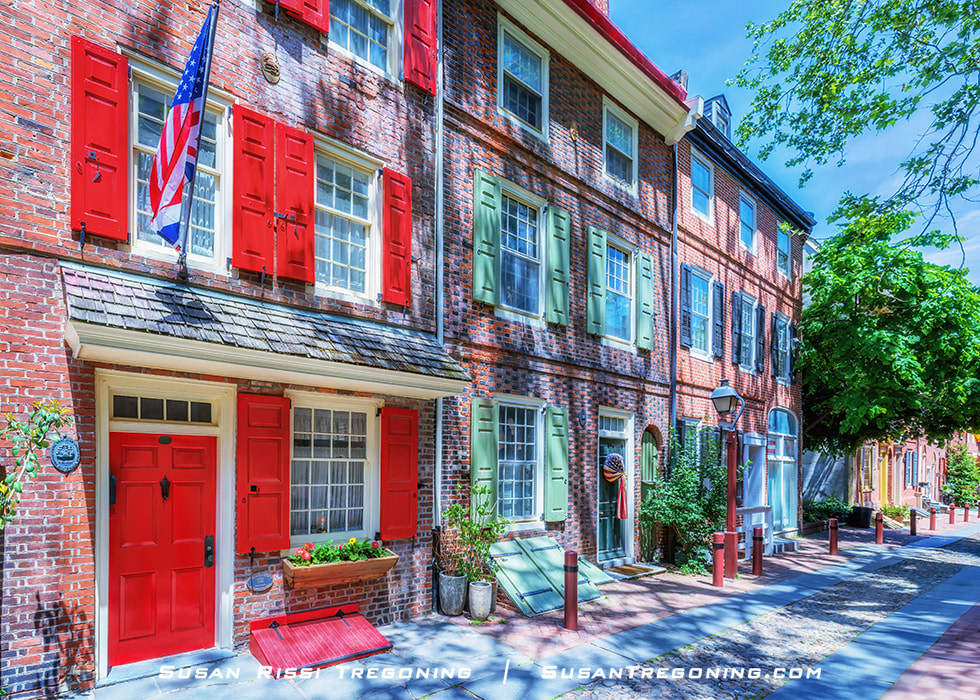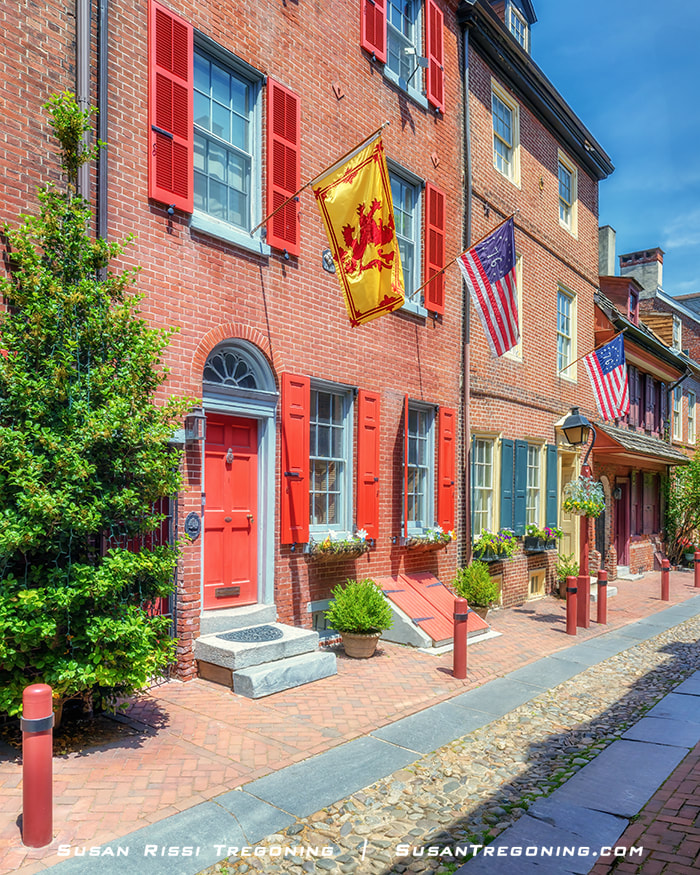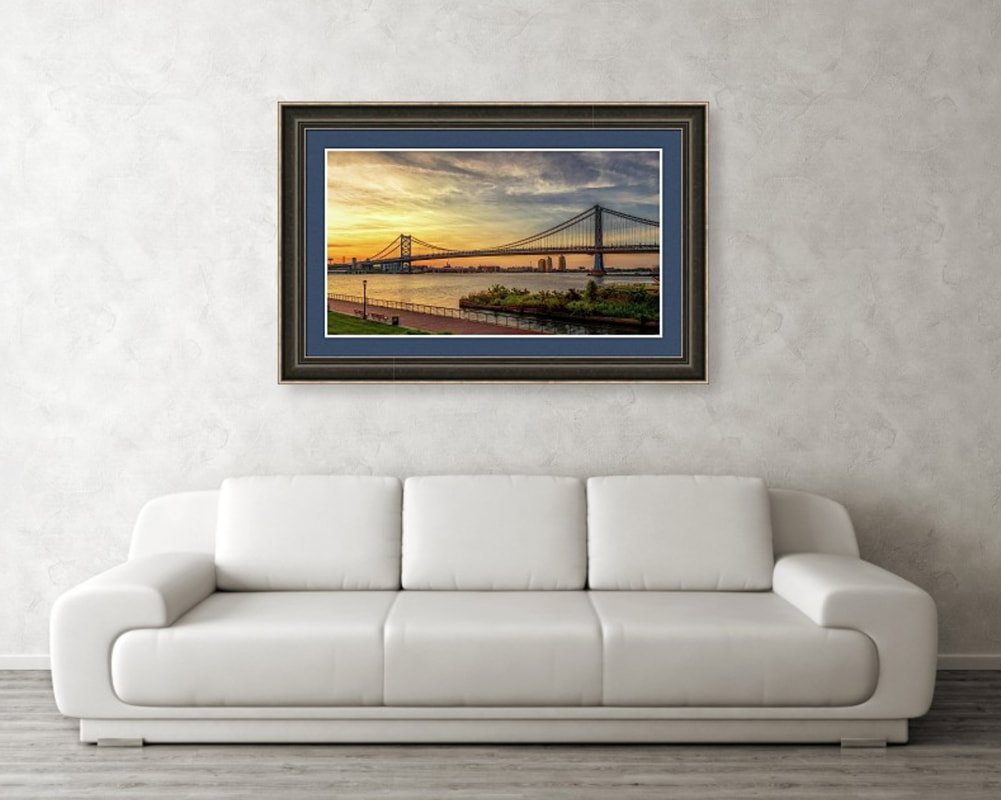|
Nestled in the heart of Philadelphia's Old City district, Elfreth's Alley, with its charming cobblestone street, has stood the test of time. The neighborhood features thirty-two houses, half of which were built before the beginning of the American Revolution, while the other half were constructed during the postcolonial and Federal periods. At over 300 years old, Elfreth's Alley holds the distinction of being one of the oldest continuously inhabited residential street in the nation.
Today, Elfreth's Alley is considered one of Philadelphia's top historical sites, second only in popularity to Independence National Historical Park among tourists and history buffs, and it attracts thousands of visitors annually. With its picturesque row houses and rich history, it's no wonder why Elfreth's Alley remains a beloved landmark in the city.
Elfreth's Alley was never part of William Penn's original plans for Philadelphia. However, by 1700, most of the city's population had settled within four blocks of the river, causing overcrowding. The convenience of being close to their customer base and the Delaware River's waterway traffic motivated artisans and merchants to seek property for purchase or rent in the area as well.
Between 1702 and 1704, Arthur Wells and John Gilbert, Front Street residents, agreed to open a cart path to help ease traffic in the area. Wells contributed 5 feet of land on the south side of the proposed Alley, extending between Front and Second Streets, and Gilbert donated 10 feet on the north side. It was named Gilbert's Alley since Wells passed away soon after its construction and didn't get a say in its naming. However, it was later renamed Preston's Alley in honor of Paul Preston, who married Gilbert's daughter-in-law after her husband's death.
It was not until approximately 1750 that Elfreth's Alley began to be known by that name. Jeremiah Elfreth, a silversmith, resided on Second Street, just north of the Alley. Interestingly, his first spouse was the sister of Paul Preston's wife, and his fifth spouse was the widow of a grandson of Arthur Wells. Through these marriages, Elfreth was able to obtain ownership of all the land on both sides of the Alley. By the time Elfreth's name became associated with the Alley, most homes on the south side and two on the north side at Bladen's Court had already been constructed.
The oldest surviving homes on the Alley are #120 and #122. William Maugridge, a member of Benjamin Franklin's Leather Apron Club, rented #122 from 1728 to 1731. It is believed that Benjamin Franklin frequently visited there.
From the late 1700s through the early 1800s, #112 accommodated a carver, boat builder, baker, and joiner. Additionally, some Alley residents, like the widow at #119 and #123, supplemented their income by renting rooms to sailors working on the waterfront. Ann Taylor operated a boarding house out of half of her residence at #116. A Journey through the History of #126
The tales that these structures hold are numerous, and just following a single house's history provides insight into the overall narrative of the time and the street:
It wasn't unusual to find women-led households on Elfreth's Alley. Elfreth's Alley was located in the most sought-after area of Philadelphia for mantuamakers since the Alley provided budget-friendly lodging options within walking distance of the city's most affluent residents - the perfect target audience. The home at #126 was constructed in 1755, and by 1762, Mary Smith and Sarah Melton, who called each other "sister-in-law," were the occupants. The women were partners in a dressmaking business, or mantuamakers, as it was known then. They jointly purchased the property, both living and operating their business there. Following Smith's passing in 1766, she bequeathed her half of the house and business to Melton. Unfortunately, Melton passed during a Yellow Fever outbreak. She, in turn, left her share of the house and business to Elizabeth Carr, her business partner at the time. Carr died in approximately 1814. After a half-century of dressmaking in the home, the era of dressmakers at #126 ended. Even though Smith, Melton, and Carr were among the few women who lived outside of marriage during the late 18th century, that common similarity was shared with other mantuamakers in the city. Unlike seamstresses and tailors, mantuamakers specialized in creating intricate gowns that required great skill. Many middle-aged mantuamakers were listed in the city directories of the time, and most were either widowed, unmarried, or separated. Like Smith, Melton, and Carr, the most successful mantuamakers relied on additional family support or lived with other single women. Their partnerships bolstered these women's financial stability, and records show that, at times, other individuals were also listed at this address, implying that they occasionally took in boarders in exchange for rent.
In 1847, #126 became the home of German shoemaker Louis Kolb, his wife, Mary, and eight children. Shoemakers were known as cordwainers then. By 1859, Kolb had also purchased neighboring #124. The Kolbs resided in one of the two houses with their eight children until around 1870. Then, John Schoendienst, another German shoemaker, purchased #126 from Kolb in 1873. He lived there with his family until the turn of the century.
Apprentices and journeymen shoemakers learning from Louis and later John lived at #126 during their tenures, along with other boarders as the dressmakers had done. As Kolb expanded the property, more than ten individuals often appeared on the Census as living at the residence in the late 19th century. The demand for affordable housing remained high, and many landowners chose to forfeit open spaces on their lots for low-cost rental units. Louis Kolb not only extended #126, but he also built a second house, albeit a tiny one with only one room on each of its three floors, on the same plot. This rental property, known as a tenement, was in line with the trends on Elfreth's Alley and the surrounding neighborhoods during the latter half of the 19th century. From Boom to Bust
As Elfreth's Alley lost its quaint storefronts, immigrants moved in. Drawn to the area to take advantage of the numerous job opportunities in these nearby factories, the Irish and Italian immigrants were the first to arrive, and, later, the Russians.
By 1880, Elfreth's Alley's homes and tenement buildings are believed to have housed more than three hundred individuals. Census records reveal that between 1870 and 1930, at least two families resided in #123, while #124 and #126 housed as many as twenty-six people. In 1900, the Freemans, a Russian family, lived in #125 with another family. It is known that some of the home's inhabitants worked at the nearby button factory. Once highly sought after, the houses on Elfreth's Alley were no longer. The departure of many factories and subsequent job losses caused residents to move away, leaving condemned homes and empty tenements in their wake, resulting in the area being classified as a slum. After World War II, the situation worsened as people left the city for newly developing suburbs, causing real estate values in the Elfreth's Alley area to plummet. The street had suffered from years of overcrowding and industrialization by the 1930s. The city had condemned #126. Wetherill Paint Company, who owned the dilapidated #106, #114, and #124, planned to demolish these structures to enlarge their paint factory. Saving Elfreth's Alley
In 1933, Dolly Ottey, owner of the Hearthstone, a café located at #115, learned of the endangered houses owned by the paint factory. Determined to save them and the entire Elfreth neighborhood, Dolly wrote a letter published in the Sunday Evening Bulletin seeking guidance. Readers directed her to Frances Anne Wister with the Philadelphia Society for the Preservation of Landmarks, known for her efforts in saving the Powel House from becoming a taxi cab parking lot.
The initial funds raised were used to purchase and restore #126. After its restoration in 1937, the Association founded a house museum there. Next, the Association rescued #124. Once restored, the house was a rental property until the late 1990s, when it became the Association's headquarters and later a part of the museum.
Today, the street consists of mainly privately owned homes and is one of Philadelphia's most captivating historical areas. Elfreth's Alley may be narrow, and the homes small. Still, many current residents have added on to compensate for the limited space. Bladen's Court, a hidden gem, boasts an authentic water pump that once supplied the entire neighborhood with water. Additionally, the Elfreth's Alley Museum at #124 and #126 offers tours led by knowledgeable guides, and the museum allows visitors to explore the interior of one of these quaint historic structures.
Elfreth's Alley is a unique destination that offers visitors a glimpse into Philadelphia's rich history. From its beautiful, well-preserved homes to its charming cobblestone streets, this historic site is a must-see attraction for anyone visiting the city. Whether you're interested in architecture and history or want to experience something different, Elfreth's Alley has something for everyone. So if you're planning a trip to Philadelphia, add this fascinating destination to your itinerary. You won't regret it!
126 Elfreth's Alley, Philadelphia, Pennsylvania
Not every image makes it into my blog. If you enjoyed the images in this article, please check out my Pennsylvania Collection for more images of Philadelphia and the rest of the state, or visit my Gallery with over 3000 images of locations from around the United States.
The Benjamin Franklin Bridge is shown double matted with 2" wide Indigo top mat and 1/4" wide Cream bottom mat. The frame is EXL3.
About the Photographer
2 Comments
6/21/2023 08:59:28 pm
As a Philly boy, I know the alley, you did some great photographic work.
Reply
6/21/2023 10:00:36 pm
Thanks so much, Louis!
Reply
Your comment will be posted after it is approved.
Leave a Reply. |
AuthorI am the 8th photographer in 4 generations of my family. Back in 2006, my husband accepted a job traveling, and I jumped at the chance to go with him. Categories
All
Archives
June 2024
This website uses marketing and tracking technologies. Opting out of this will opt you out of all cookies, except for those needed to run the website. Note that some products may not work as well without tracking cookies. Opt Out of Cookies |









 RSS Feed
RSS Feed